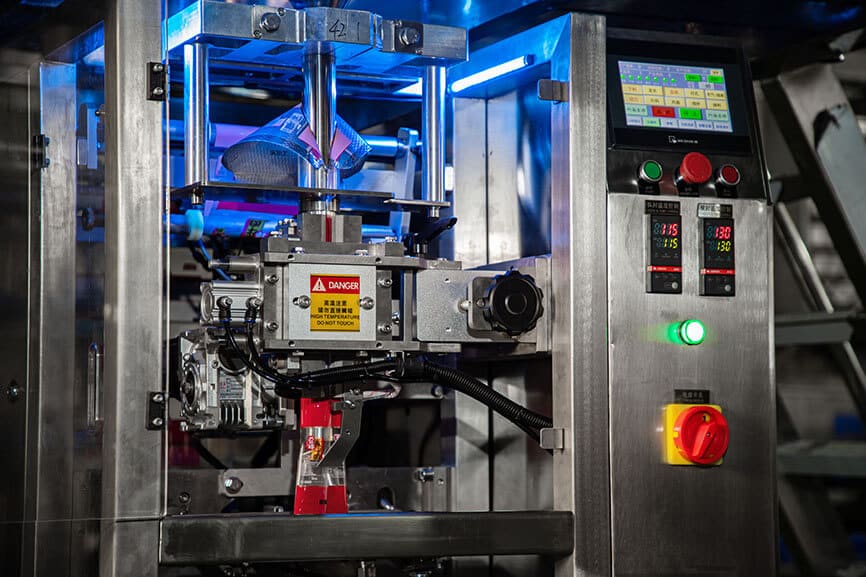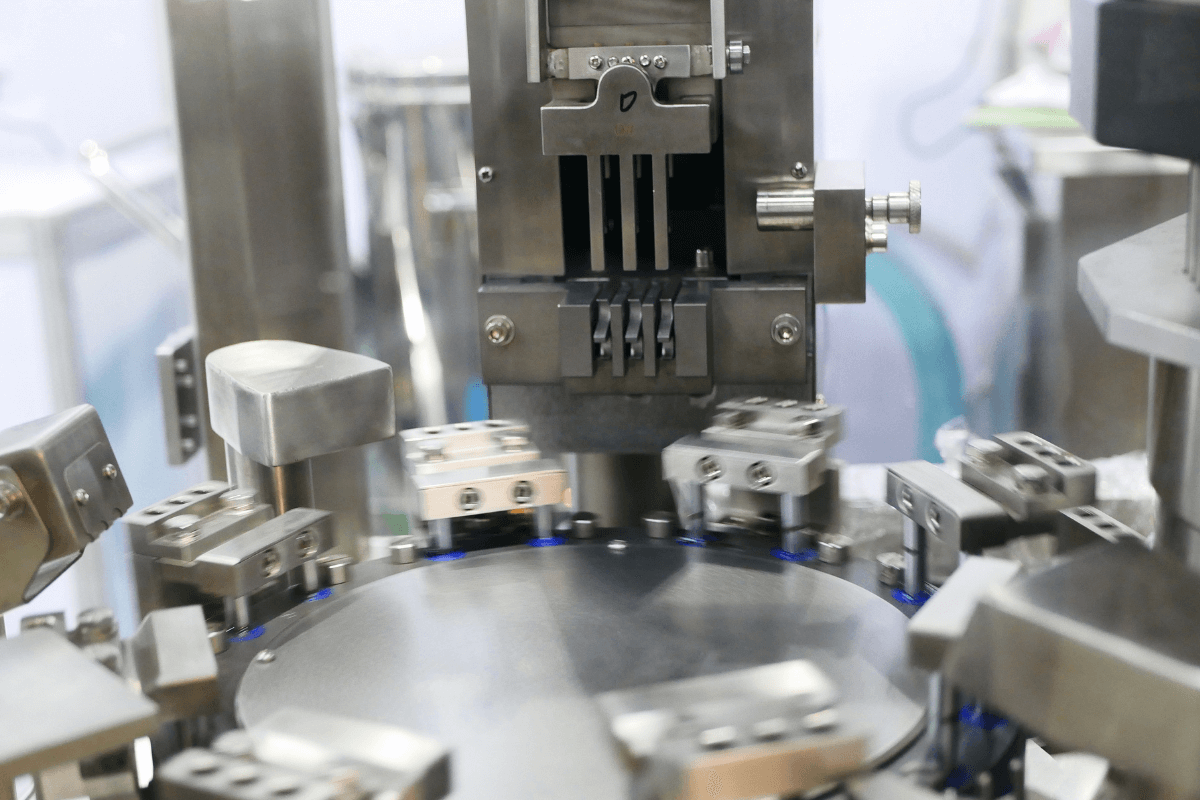Introduction
The food industry has seen significant advancements in recent years, and one of the most notable transformations has come in the form of pouch packing machines. These machines have revolutionized the way food products are packaged, preserved, and presented, ultimately leading to greater efficiency, safety, and sustainability in the food sector. In this article, we will explore the various aspects of pouch packing machines and how they are changing the food industry for the better.

The Importance of Pouch Packing Machines in the Food Industry
- Food preservation: Pouch packing machines play a critical role in preserving the freshness and quality of food products by providing an airtight seal. This helps to prevent spoilage and contamination, extending the shelf life of the product.
- Consumer appeal: The use of pouches in food packaging has also contributed to increased consumer appeal. Pouches provide a convenient and attractive packaging option, making it easier for consumers to access, store, and consume food products.
- Cost-effectiveness: Pouch packing machines offer a cost-effective solution for food manufacturers, as they require less material compared to traditional packaging methods like cans and boxes. Additionally, the machines are designed for high-speed operation, which helps to reduce labor costs and increase overall productivity.
Types of Pouch Packing Machines
There are several types of pouch packing machines available in the market, each catering to different needs and requirements. Some of the most common types include:
- Vertical form-fill-seal (VFFS) machines: These machines create pouches from a continuous roll of film, filling and sealing them vertically. VFFS machines are widely used for packaging dry goods, such as snacks, coffee, and powders.
- Horizontal form-fill-seal (HFFS) machines: HFFS machines also use a continuous roll of film but create pouches by forming, filling, and sealing them horizontally. These machines are suitable for packaging products that require a more gentle handling process, like liquids, gels, and pastes.
- Pre-made pouch filling machines: Unlike VFFS and HFFS machines, pre-made pouch filling machines work with pre-formed pouches. They fill and seal the pouches, making them suitable for a wide range of applications, including perishable items, ready-to-eat meals, and frozen foods.
Key Components of Pouch Packing Machines
Pouch packing machines are composed of several essential components that work together to ensure the efficient packaging of food products. These components include:
- Filling system: The filling system is responsible for accurately dispensing the food product into the pouch. Depending on the type of product being packaged, the filling system may utilize volumetric, weigh, or liquid filling methods.
- Sealing system: Once the pouch is filled, the sealing system ensures that it is securely closed to maintain freshness and prevent contamination. There are various sealing methods used, such as heat sealing, ultrasonic sealing, and induction sealing, depending on the material and requirements of the pouch.
- Film transportation: The film transportation system ensures the smooth and precise movement of the film through the machine, enabling the creation and sealing of pouches at high speeds.
Advancements in Pouch Packing Technology
In recent years, pouch packing machines have seen significant technological advancements that have further improved their efficiency, accuracy, and overall performance. Some of these advancements include:
- Automation: The integration of automation technologies has greatly improved the speed and accuracy of pouch packing machines. With advanced software and controls, these machines can handle complex tasks with minimal human intervention.
- Smart sensors and controls: Pouch packing machines now come equipped with smart sensors and controls that enable real-time monitoring and adjustment of various parameters, such as temperature, pressure, and filling volume. This ensures consistent and high-quality packaging results.
- Robotics: The incorporation of robotic technology in pouch packing machines has allowed for greater flexibility and precision in handling and packaging processes. This has been particularly beneficial for fragile or irregularly shaped products that require gentle handling.
Benefits of Pouch Packing Machines for Food Manufacturers
The adoption of pouch packing machines has brought several benefits to food manufacturers, including:
- Improved efficiency: Pouch packing machines enable high-speed packaging, reducing the time it takes to package products and increasing overall productivity.
- Enhanced flexibility: These machines can handle a wide range of pouch sizes, shapes, and materials, making it easy for manufacturers to adapt their packaging to changing market demands and consumer preferences.
- Reduced waste: The use of pouch packing machines results in reduced material waste, as they are designed to minimize film usage and produce minimal scrap.
The Role of Pouch Packing Machines in Food Safety
Pouch packing machines contribute to food safety in several ways:
- Contamination prevention: By providing an airtight seal, pouch packing machines help to prevent contamination from external sources such as bacteria, moisture, and air.
- Airtight sealing: The sealing system used in pouch packing machines ensures that pouches are securely closed, maintaining the freshness and quality of the food products.
- Tamper-evident features: Many pouch packing machines can incorporate tamper-evident features into the packaging process, providing an added layer of protection and consumer confidence.
Sustainability and Pouch Packing Machines
Pouch packing machines contribute to sustainability efforts in the food industry in various ways:
- Reduced packaging materials: The use of pouches requires less material compared to traditional packaging methods, resulting in reduced waste and a lower carbon footprint.
- Recyclable materials: Many pouch packing machines can work with recyclable materials, promoting a circular economy and reducing the environmental impact of packaging waste.
- Energy efficiency: Modern pouch packing machines are designed with energy efficiency in mind, consuming less power and reducing overall energy consumption.
Pouch Packing Machines and Customization
Pouch packing machines offer numerous customization options for food manufacturers:
- Custom pouch shapes and sizes: These machines can create pouches in a wide range of shapes and sizes, allowing food manufacturers to create unique packaging designs that stand out on store shelves and appeal to consumers.
- Unique branding opportunities: Pouch packing machines make it easy for manufacturers to incorporate their branding elements, such as logos, colors, and graphics, into the packaging design. This not only enhances brand recognition but also helps to convey important product information to consumers.
The Future of Pouch Packing Machines in the Food Industry
As the food industry continues to evolve, pouch packing machines are expected to play an even more significant role in the coming years:
- Increased adoption: The demand for convenient, attractive, and sustainable packaging solutions is expected to drive the adoption of pouch packing machines in the food industry.
- Technological advancements: Continuous innovation in pouch packing technology will lead to more advanced machines with enhanced capabilities, further improving efficiency, accuracy, and flexibility in the packaging process.
- Greater focus on sustainability: As sustainability becomes an increasingly important concern, pouch packing machines will continue to play a crucial role in reducing the environmental impact of food packaging, through the use of recyclable materials and energy-efficient designs.
Conclusion
Pouch packing machines have already made a significant impact on the food industry, transforming the way food products are packaged, preserved, and presented. With their numerous benefits, including improved efficiency, flexibility, and sustainability, these machines are expected to play an even more prominent role in the future of the food industry. As technology continues to advance, food manufacturers will likely adopt more innovative and sustainable packaging solutions to meet the ever-changing needs of consumers and the environment.
FAQs
- What types of food products can be packaged using pouch packing machines?
Pouch packing machines are suitable for a wide range of food products, including dry goods, liquids, gels, pastes, and frozen items.
- Are pouch packing machines suitable for small-scale food manufacturers?
Yes, pouch packing machines are available in various sizes and capacities, making them suitable for food manufacturers of all scales, from small start-ups to large-scale operations.
- How do pouch packing machines contribute to food safety?
Pouch packing machines help to maintain food safety by providing airtight sealing, preventing contamination, and incorporating tamper-evident features in the packaging process.
- Can pouch packing machines work with eco-friendly materials?
Yes, many pouch packing machines can work with eco-friendly and recyclable materials, supporting sustainability efforts in the food industry.
- What are the key components of a pouch packing machine?
The key components of a pouch packing machine include the filling system, sealing system, and film transportation system, which work together to ensure efficient and accurate packaging of food products.
